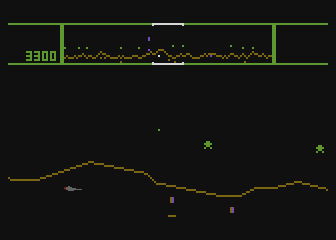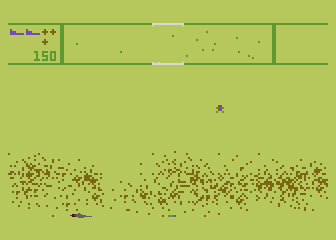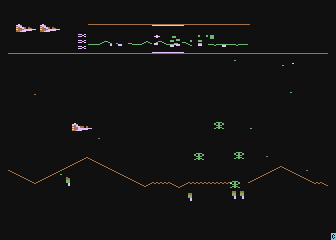|
|
Defender 8-??-82
Talk about a surprise out of nowhere. While doing
research for his new book Atari Corp: Business is War, Curt
Vendel came across some source code files for a few Atari 8-bit
games. While most of the source code was for released
games, one contained a completely new and unknown version of
Defender. This version was written by Michael Colburn (who later
went on to do the 1200XL self-test demo) and looks completely
different than the version by Steve Baker that was eventually
released. Why Michael Colburn decided to do his own
version is currently unknown, but the source code indicates that
he finished his first revision (rev. 0) sometime in August of
1982 which was the same time as Steve Bakerís version was
finished (the 5200 adaptation was done by August 15th so the
8-bit version was finished slightly earlier). The most
likely explanation is that like several other early Atari
400/800 games that pre-dated the launch of the 5200 (Dig Dug,
Centipede, Qix, Space Invaders, etc.), Atari had separate
versions done for the Atari 400/800 and the 5200. However
for some reason this version ended up being shelved and
forgotten about and Steve Baker's 5200 version was the version
ultimately released on the 400/800.
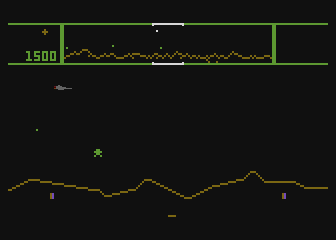
The first thing youíll notice about this version is that the graphics and colors are much simpler. Not only are the enemies much smaller and less detailed, but everything is uses the dreaded orange/green/blue color scheme that was very common in early Atari 8-bit programs. Next youíll see that the reserve lives counter, smart bomb indicator, and score font are very simplistic looking, but they may just be placeholders at this point. Ok, so the graphics arenít as flashy as the released version, but how does it play? The answer? Alright...
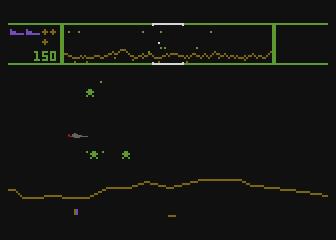
While Michaelís version of Defender isnít as polished looking as Steveís, it runs much smoother and some of the explosion graphics are actually better looking. Michaelís version also doesnít have all the annoying flicker that Steveís version suffers from when too many objects are on the screen, but only because it is sacrificing detail. The sounds in this version are also more simplistic and there is a constant 'engine noise' in the background whether your ship is moving or not. The enemy bullets in this version are also very tiny and appear to 'stick' to the screen sometimes rather than move (much like the mines in later levels) which makes them hard to avoid. There also seems to be a long pause before all the level starts which isn't nearly as noticeable in Steve's version. As valiant of an effort as this alternate version is, itís obvious that Steveís version is the superior. And much like in Highlander, when it comes to an official port there can only be one.
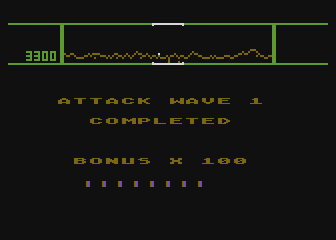
As it stands, the game seems complete with only a few little glitches here and there (such as the 'dash' that appears at the bottom of the screen). However as the source code indicates that this is revision 0, the game is obviously still a work and progress. So Michael would have spruced it up a bit and fixed the remaining bugs fixed before being releasing it. However even in this early state itís interesting to see how another programmer would have gone about programming the game. So sit back and take a look at the Atari 8-bit Defender we *almost* had.
|
Notice the 'dash' at the bottom of the screen
|
Kaboom!
|
|
Simple, but it gets the job done |
Here's the released version for comparison |

